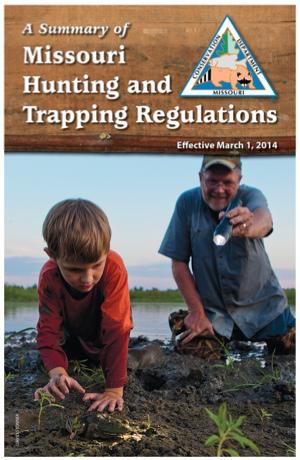Features
MO Dept. of Conservation Regulation Booklets Available
March 15th 2014 by Dee Loflin

Submitted by
Dee Loflin, SMT Manager/Writer
Missouri - The Missouri Department of Conservation’s (MDC) 2014 Summary of Missouri Hunting and Trapping Regulations, 2014 Summary of Missouri Fishing Regulations, and 2014 Spring Turkey Hunting Regulations and Information booklets are now available. The booklets contain related regulation information in an easy-to-read format, including regulation changes and other new information for the year ahead.Dee Loflin, SMT Manager/Writer
“Conservation makes Missouri a great place to hunt and fish, and abiding by the regulations of the Wildlife Code of Missouri is important to keep it that way by sustaining healthy forests, fish and wildlife,” says MDC Protection Division Chief Larry Yamnitz. “These handy regulation summary booklets are great resources for hunters, trappers, and anglers.”
Get copies of the booklets where permits are sold, at MDC offices throughout the state, and online at mdc.mo.gov by searching for the name of the booklet.
Get a direct link to the hunting and trapping booklet online at http://mdc.mo.gov/node/3657.
Get a direct link to the fishing regulations booklet online at http://mdc.mo.gov/node/6108.
Get a direct link to the spring turkey hunting booklet online at http://mdc.mo.gov/node/4066.
For more information on hunting, trapping, fishing, and other outdoor activities in Missouri, visit http://mdc.mo.gov.
Last Updated on March 15th 2014 by Dee Loflin
https://showmetimes.com/Blogpost/uqoe/MO-Dept-of-Conservation-Regulation-Booklets-Available

